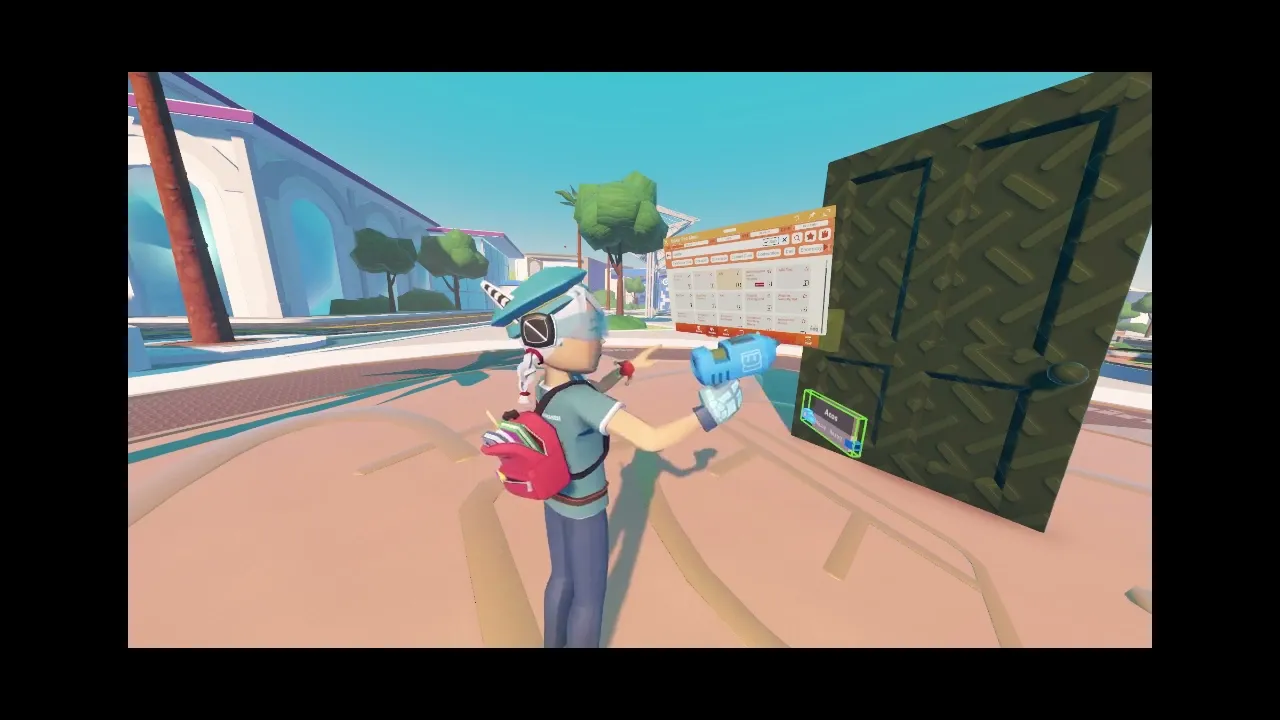

Rec Room
Maker Pen
Team: Maker Team
Role: UX, UI Designer, User Testing, Strategist, and Visionary.
Tools: XD, Figma, Adobe Suite, Rec Room, Unity, Sigma, Amplitude, and Hex.
Results: We boosted tool discoverability and shipped 13+ new features, including AI tools, Favorites, contextual pullout menus, a debug menu, and expanded circuit options, hierarchy menu, without needing a full menu overhaul.
The updated Maker Pen menu now provides a smoother, more consistent experience across VR, console, and mobile. This reduced friction for creators and sped up creation workflows, while laying a strong foundation for future updates.
Tool Settings Usage
↑ 72% increase in engagement after launch across screen, console, mobile, and VR platforms over time.
New Features
13+ added with no major redesign required
Release: 2019 - 2020


Design Solution
Results: We significantly improved tool discoverability and added 13+ new features—including AI tools, Favorites, contextual pullout menus, a debug menu, and expanded circuit options—without requiring a full menu overhaul.
The redesigned Maker Pen menu now delivers a consistent, intuitive experience across VR, console, and mobile platforms, reducing user friction and enabling faster, more seamless creation. These updates laid the groundwork for future expansion while maintaining clarity and ease of use for both new and advanced creators.
Key Improvements: Tool settings are now surfaced as contextual options on the main page for MVP, allowing creators to quickly access relevant settings without navigating through multiple menus or pull-out menus especially when using screen creation versus VR.
User Feedback: Long-term users appreciated the old UI's bubbly buttons and pagination but found the new menu a bit too large. To address this, we plan to add collapsible sections and tool shortcuts, allowing creators to work in virtual space without needing to open menus. Additionally, we aim to improve the flow for logic creation.
Next Steps: Before implementing collapsible features, we prioritized refining the 2D menu layout, improving left- and right-hand interactions, introducing pullout menus, and adding platform-specific shortcuts to boost creator efficiency.
Design Process




The Objective
Understanding Creators
Research Approach
To uncover meaningful insights, I combined first-hand research with competitive analysis:
100+ user interviews & surveys to surface needs, pain points, and desires.
Hands-on immersion: I hosted creator classes across various devices to personally experience creation workflows.
Competitor analysis: Mapped other platform creation tools for feature gaps and opportunities.
Top Insights from Research
User Priorities:
Desire for more features and better discoverability
Need for cross-platform usability and customizable layouts
Lack of debugging tools, especially for circuits and advanced logic
Synthesizing the Research
I categorized pain points and aligned them to key feature requests. This allowed me to:
Identify and prioritize gaps in the existing menu
Build personas reflecting beginner to expert needs
Present actionable findings to stakeholders and guide product decisions
User Journey Maps
Beginner Creator Flow:

Improved onboarding through clearer tool hierarchy
Surfaced key tools like “This Room” and platform-specific shortcuts
Surface Ink Limitations and Constraints
Key Challenges
& Opportunities
Cross-Platform Consistency: Moving pull-out menus across platforms disoriented users, complicating Rec Room’s otherwise seamless, collaborative UX.
Readability: Transparent menus overlapped with content, making them hard to read and limiting new creators to basic tasks.
While the system works well across platforms, there are still opportunities for iteration and improvement. Addressing existing issues and refining the creation experience will further improve usability and ensure continued success.
Discoverability: Nested tools and the lack of contextual settings required frequent menu switching, slowing creators down.
Accessibility: The absence of tooltips and reliance on icons hindered usability for creators with visual impairments.
Old Menu Design
Strengths: Charming, colorful interface with familiar paginated navigation.
Weaknesses: Required extra steps, struggled with scaling for complex tools, and was less intuitive for new users.

Maker Pen Menu Old Architecture
Prototyping








Prototyping for a User-Centered Experience
Features for Scalability
Iterative Design Through Prototypes
Balancing Workflows
Incorporating Familiarity
Addressing Testing Needs
Overview
Measure Success
We boosted tool discoverability and shipped 13+ new features, including AI tools, Favorites, contextual pullout menus, a debug menu, and expanded circuit options, hierarchy menu, without needing a full menu overhaul.
The updated Maker Pen menu now provides a smoother, more consistent experience across VR, console, and mobile. This reduced friction for creators and sped up creation workflows, while laying a strong foundation for future updates.
Tool Settings Usage
↑ 72% increase in engagement after launch across screen, console, mobile, and VR platforms over time.
New Features
13+ added with no major redesign required
Release: November 10 2022









